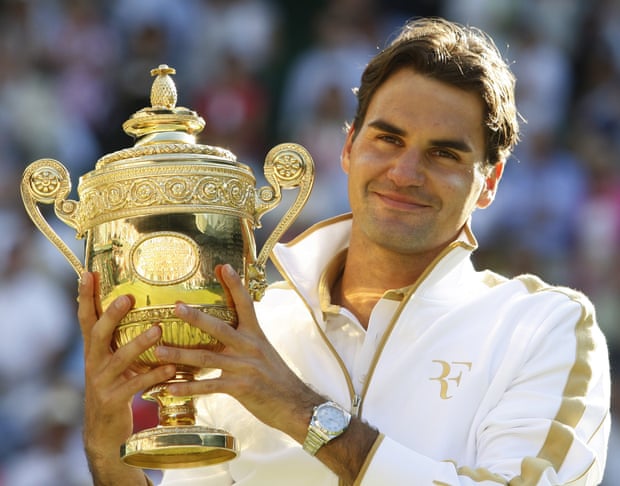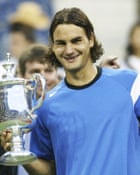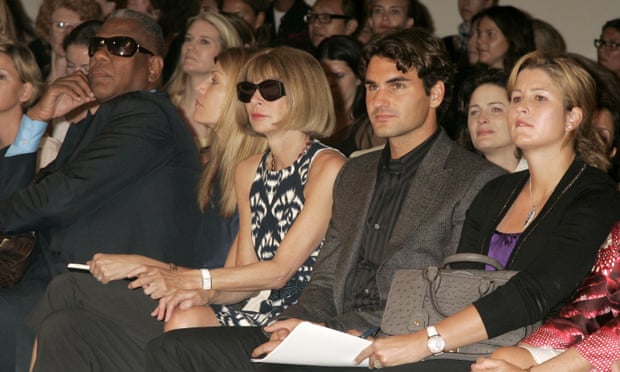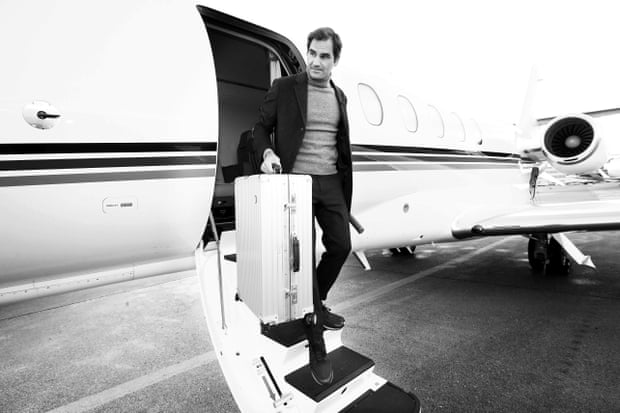Roger Federer’s Timeless Style | Men’s Fashion
Roger Federer. Wimbledon in 2009. At the time, it was the longest men’s major final in history. Thriller in his 5 sets, 77 his games with Andy Roddick. But most importantly? his jacket.
The gold-piped RF monogram zip-up jacket is embroidered in cursive with the number 15, Federer’s record-breaking total of Grand Slam titles won in match wins. rice field.
Was it presumptuous? Did the Federal Reserve take it out in a bag with quiet hope? Or did a Nike rep hand it to him before presenting the trophy? , much like Federer’s outfit during that year’s tournament, which generated a lot of column inches. There were also casually pin-striped shirts and sneakers with gold accents. This was the kind of aesthetic panache that Federer became known for.

Well, with the news of his retirement last week, tennis (and sports in general) lost one of its most stylish protagonists following Serena Williams’ announcement in August. Federer has had quite the sartorial journey. From risky hairstyle roll calls (hydrogen peroxide home dye jobs, awkward topknots, greasy ponytails, suit pants worn back and forth) to the best friend of US Vogue editor-in-chief Anna Wintour. According to front-row attendee, Rolex ambassador, designer and LVMH CEO Bernard Arnault, he is a “living god.”
It’s an unfortunate cliché for stylish men, but Federer credited his first fashion awakening to his wife, Mirka, once told GQ: “Um, is this look okay?”
“Then I really started to get into it. I traveled more, went to different cities, met interesting people. The next thing I knew, when I looked around me, I was probably in Milan. and New York, I think it’s everywhere.

Since then, Federer’s smooth, polished style off the court has been matched by his gentlemanly one-handed backhand and ballet-like volleys. Off the court, he loves turtles on his neck. A smart, well-cut wool coat with a worn collar. I threw the sweater over my shoulders. double breasted suit. But he’s also not afraid to mix it with his bomber, denim, leather jackets, gingham check button-downs, and colorful sneakers.
He had a hands-on design relationship with Uniqlo that signed a $300 million 10-year deal in 2018, ending his long-standing relationship with Nike. Federer approaches the Japanese brand, famous for its comfortable and cozy basics, and works closely with designer Christophe Lemaire, his director of creatives at Uniqlo’s research and development center in Paris. And he has a specific edict (no yellow). Comfort is his number one priority, followed closely by talent.

Aside from that, Federer has a shoe deal with Swiss brand On, and his line is called The Roger Collection, which is pretty amusing, at least for British audiences. His signature shoe, the Roger His Pro, was born from a 3D scan of his own foot and sold out at launch last year. On the other hand, Roger Advantage his model is a modest Stan Smith level.
He has become a keen analyst of his past style and the sport in general. For example, he recognizes that the loose-fit era is over and is now actively embracing sleeker silhouettes on the court, telling GQ magazine: You want to think you’re big and buff.now [players] Look stronger and slimmer. ”

He (perhaps cheekily, but perfectly accurately) cited Rafa Nadal’s ill-fated Capri-wearing days as an example of how important image is to the modern sports star. , refuses to be hard on his younger self about his ponytail days. Do you regret having long hair? No, he was glad he had it. Glad I removed it again!”
He prides himself on his innovative approach, and his striking all-black ensemble at the US Open set the tone for a racket-wielding assassin during the night session. Speaking to GQ magazine about his time with Nike, who fought for more than two years to reclaim the rights to the RF monogram, he told GQ magazine:
“We tried to push the limits, sometimes a little too much, but it was okay. These moments were unforgettable and I was happy to take the chance. I tried.”
Sometimes he went too far. At least, according to Wimbledon officials who banned his orange-soled shoes in 2013, they deemed them a violation of the strict all-white dress policy. In, he has never been criticized (most memorably when the president of the French Tennis Federation called her French Open catsuit disrespectful). Federer has never been accused of putting style over substance, perhaps reflecting an enduring double standard.

Federer, along with Williams on the women’s side of the sport, has done more than anyone to advance the aesthetics of modern tennis and draw athletes into the world of fashion, but technically he was the first. not.
Federer’s preppy V-neck knitted cardigans, worn on Center Court, made him the likes of tennis champions Rene Lacoste and Fred Perry (who founded their eponymous brands in 1933 and 1952, respectively). Alluded to the fact that it was a regression of Suzanne Lenglen, the world’s number one charismatic woman in the 1920s, tended to hit the court in glamorous fur. Arthur Ashe played to Buddy Holly’s specs and became an aviator when fashion changed. But especially in the men’s game, Federer’s influence on his younger colleagues and the wider tennis world is undeniable.
Bulgarian player and Vogue favorite Grigor Dimitrov dabbles in modeling. Yannick Sinner, the fiery-haired young gun, has graced the covers of GQ and Icon, and announced a partnership with Gucci earlier this year. Italian sculptor Matteo Berrettini has his collection of capsules with his boss Hugo.Canada’s Felix Auger-Aliassime was especially Dapper at last year’s Met Gala in New York. Even Andy Murray has a variety of sportswear, AMC.
It’s not impossible for Federer to turn to the fashion industry full-time after retiring. Last month, Williams wore a diamond-encrusted cape and said goodbye at the US Open. Look at Federer and his jacket.













